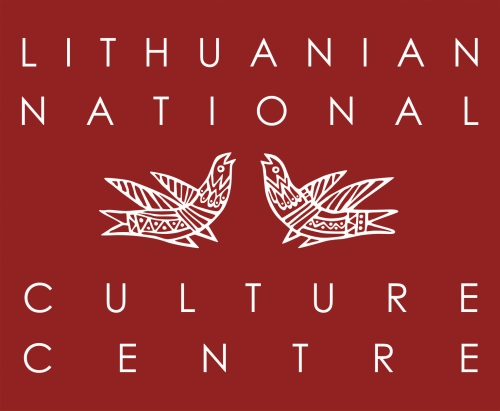| National Costumes |
Lithuanian national costume is now an important national symbol, a testimony to our ancestors’ high standard of workmanship and a reflection of their artistic taste. Today’s national costume is a reconstruction of the festive national clothing of the 19th century. Lithuanian National Culture Centre is devoted to researching and promoting national costumes. It organizes various exhibitions, lectures and seminars and consults those willing to acquire an authentic costume of their own. The costumes of all five Lithuanian ethnographic regions consist of the same main elements, but differ in silhouettes, colours, ornaments, wearing habits of separate elements, adornments and other accessories. Aukštaitija (NORTH EASTERN Lithuania) Costumes worn by women in Aukštaitija are frequently considered to be the most archaic in Lithuania. The white cloths – shirts, aprons and headdresses – were usually decorated with archaic red patterns. A peculiar element of the woman’s costume in Aukštaitija – a married woman’s wimple – is reminiscent of the Middle Ages. A wimple was worn by winding it round the face to cover the neck and shoulders. Woollen checked skirts were the most dominant. Bodices were most often sewn from expensive industrially manufactured fabrics (e.g. silk, damascus, velvet). The main element of the men’s costume in Aukštaitija was a coarse overcoat sewn from cloth of naturally grey or brown woollen yarn or dyed black, dark blue or dark brown. Žemaitija (NORTH WESTERN LITHUANIA) Samogitian costumes are distinguished for their flamboyance. The women of South Žemaitija wore top skirts striped lengthwise and several underskirts, sometimes as many as five. Wide festive aprons of the Samogitian women were also striped lengthwise. Women liked to wear several red checked headscarves at once by combining several ways of tying them. They wore leather shoes or solid wooden shoes. Shawl-like apparel worn over shoulders was nearly an indispensable facet of the Samogitian woman’s festive costume. In the middle of the 19th century, Samogitian men wore coarse overcoats. In the South, they usually wore overcoats sewn from cloth of natural light-colour woollen yarn, while in the North, the cloth for overcoats would be frequently dyed dark green, blue and black. In the second half of the 19th century, coarse overcoats were gradually replaced by frock coats. Dzūkija (SOUTH EASTERN Lithuania) The Dzūkija men wore rough overcoats sewn from natural homespun, decorated with dark stitches and edgings. In the Northern part of the region the women’s costume was similar to garments of the neighbouring province of Aukštaitija. Women admired white linen cloths: aprons, shawls and bonnets. Married women wore small wimples similar to wimples of women in Aukštaitija, but smaller and easier to tie. Checked skirts, dark aprons with tiny checks and multi-coloured patterns, white shirts with white openwork embroidery were dominant in the whole region of Dzūkija. The Dzūkija women wove a great many sashes. Girls decorated their heads with gold-toned galloons, crowns made of silk ribbons, while married women wore white and coloured bonnets covered with headscarves. Suvalkija (SOUTH WESTERN Lithuania) Festive costumes of the Suvalkija inhabitants were sewn both from manufactured and good quality homespun cloths. The Suvalkija women preferred rich, deep colours, such as dark blue, dark red, violet, green, for their festive attire. Colourful interwoven patterns and decorative elements were then especially showy. Women wore wide gathered skirts striped lengthwise. The skirt testified the financial status of the owner. The Suvalkija women’s shirts distinguished for their especially wide sleeves, gathered into multiple pleats and embroidered with white plant motifs. The apron with a complicated overlay design constituted the most significant and complex part of the costume worn by the women of this region. The Suvalkija men preferred light coloured cloths. In the middle of the 19th century, a town dweller’s attribute – a coarse frock coat – came into fashion. A waistcoat was usually worn under the frock coat. MAŽOJI LIETUVA (WESTERN LITHUANIA) In the first half of the 19th century, the costume of the inhabitants of Mažoji Lietuva was multi-coloured and adorned with exotic, ancient elements. Women used to wear shirts with fine embroidery and short bodices or jackets. Checked or striped skirts were covered with linen aprons decorated with red ornaments interwoven into their white background. The women of the region girdled themselves with wide and narrow pick-up patterned sashes and had an especially decorative flat handbag called a delmonas fastened at the waist. In the beginning of the 19th century, brides would wear a very impressive bride’s bonnet (kykas) – a very tall cylindrical headdress of black velvet or felt. Men wore not only long, but also short trousers. The fashion for them came from the Western Europe. Their coarse overcoats were also cut according to the 18th century official fashion, with pleated gussets at their sides. ARCHEOLOGICAL HISTORICAL COSTUME OF THE BALTIC TRIBES Lithuanian National Cultural Centre has a unique collection of 1st-14th century costumes featuring seven Baltic tribes. It reflects the development of Baltic culture over a thousand years and is the richest collection of its kind in Lithuania. The collection consists of four chronological periods: I-IV centuries, V-VIII centuries, IX-XII centuries, XIII-XIV centuries. It is comprised of 56 costume sets, tribal jewelry, leather accessories, work tools, weapons and shoes. The costumes have been reconstructed on the basis of archaeological research, historical data and European iconography. The collection was realized by archaeologist dr. Daiva Steponavičienė, archaeologist, jeweler Evaldas Babenskas, textile specialist Danutė Keturakiene and a group of the best Lithuanian masters – weavers, shoe designers, jewelers, blacksmiths. |







